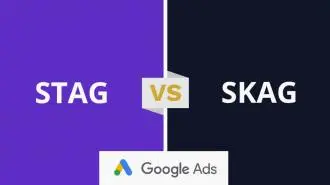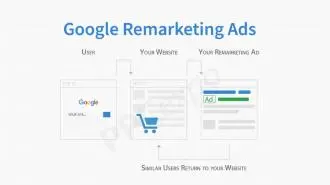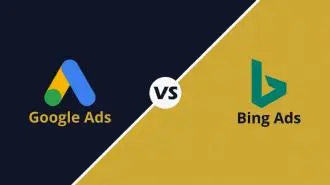Summary / TL;DR
Calculating ROI and CPL in Google Ads is essential for understanding campaign profitability and cost-efficiency. ROI is measured by subtracting overall costs—including ad spend and product costs—from total revenue, then dividing by those costs. For example, spending $200 to generate $2,000 in sales from $1,000 of goods yields a 66.6% ROI. Cost per lead (CPL) is calculated by dividing total campaign costs by the number of leads generated. For instance, $1,000 spent for 100 leads results in a $10 CPL. Businesses should also consider metrics like cost per acquisition (CPA) and customer lifetime value (CLV) to refine their budget per lead. Maximising campaign return involves improving ad relevance, targeting high-intent audiences, eliminating underperforming keywords, and conducting A/B testing. Tools such as Google Analytics and conversion tracking help monitor and optimise performance. Calculating these metrics allows for better allocation of marketing resources and enhances overall ad efficiency.
Marketers tend to pay attention to metrics such as website traffic, views, and engagement.
But all that means nothing if it doesn’t help lead generation and conversions. While executing marketing campaigns, your main focus should be optimising your advertising spend to achieve lower-cost returns.
That brings us to two important metrics — return on investment or ROI and cost per lead (CPL). The numerical data derived after calculation will help you plan your marketing strategy and optimise business goals accordingly.
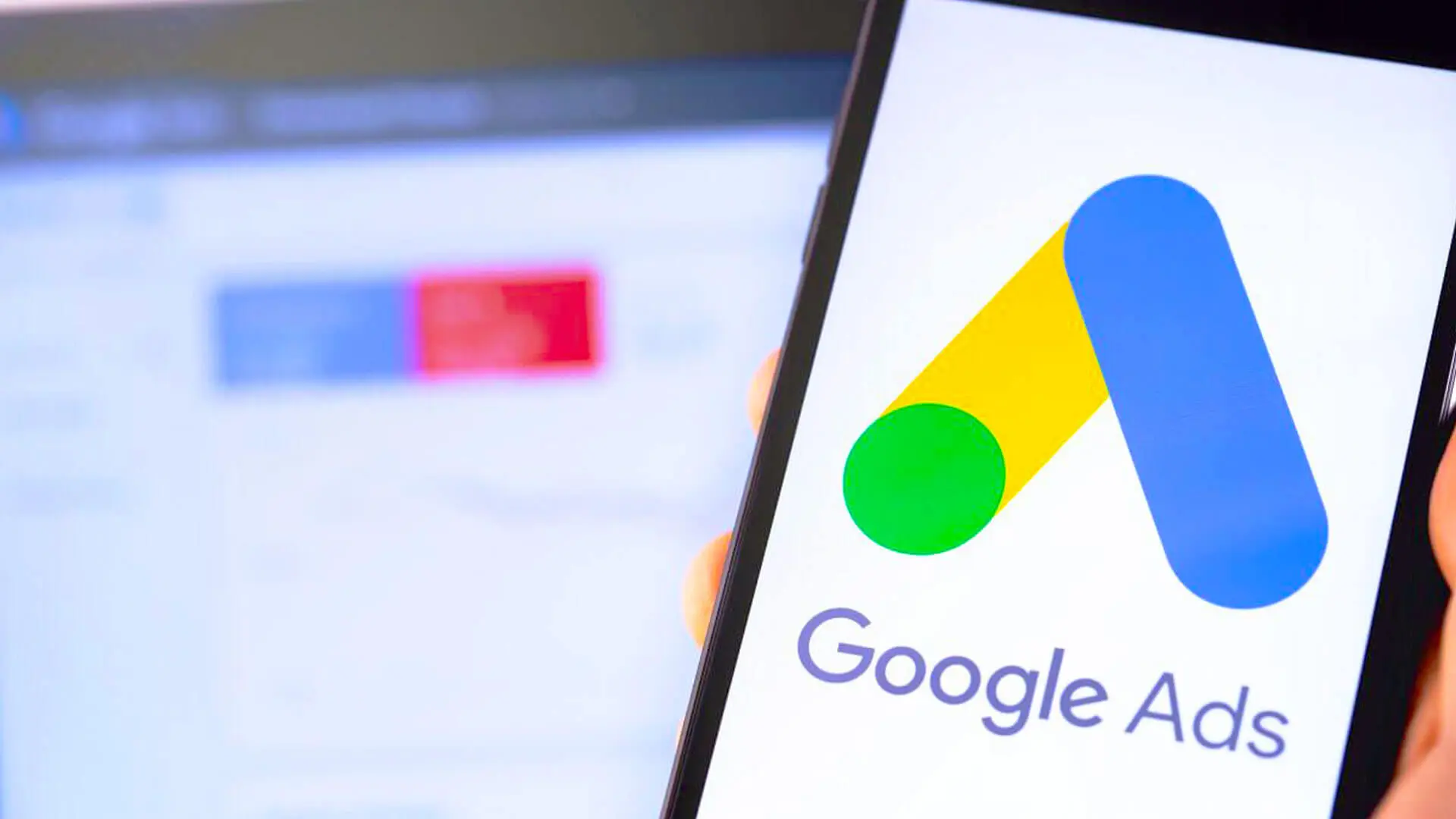
However, most marketers face hurdles when it comes to accurately calculating your Google Ads ROI and CPL within the ad network, particularly in PPC advertising.
That’s why we’re here today with a comprehensive guide on how to calculate CPL and ROI in Google Ads. Additionally, we’ll highlight ways to improve these metrics (reducing cost per lead to increase ROI) to help you get the most out of your ad campaigns.
So, let’s begin!
Want to receive updates? Sign up to our newsletter
Each time a new blog is posted, you’ll receive a notification, it’s really that simple.
Calculating ROI And CPL In Google Ads
Return On Investment (ROI)
ROI, or return on ad spend, is essentially about the profit you earn from your Google Ads efforts. By identifying which campaigns deliver the best returns, you can smartly allocate your budget. This ensures you invest in campaigns that are more likely to succeed.
That’s why it’s vital to calculate ROI on Google Ads campaigns. Whether used to generate leads, drive valuable customer activity, or increase sales, you can employ these calculations to assess if your advertising efforts yield the projected profits.
How To Calculate ROI In Google Ads?
Now, the average ROI is computed as the ratio of net profit to total costs. However, the exact method for measuring ROI will depend on the specific marketing goals of your Google Ads campaigns.
Let’s consider one such formula: Take the revenue from your Google listings and ads, subtract it from the overall costs, and then divide that by the overall costs.
Essentially, ROI = (revenue – overall costs)/overall costs, indicating the return on each dollar spent.
Consider, for instance, goods that cost $100 to manufacture but are sold at $200, yielding a positive ROI. You end up selling ten of them as a result of promoting them on Google Ads. So, your total sales are $2,000 and say you spend $200 as an investment in the Google Ads campaign.
The ROI, which contributes to your total revenue minus management fees, would be approximately 66.6%, calculated as ($2,000-($1,000+$200)/($1,000+$200)).
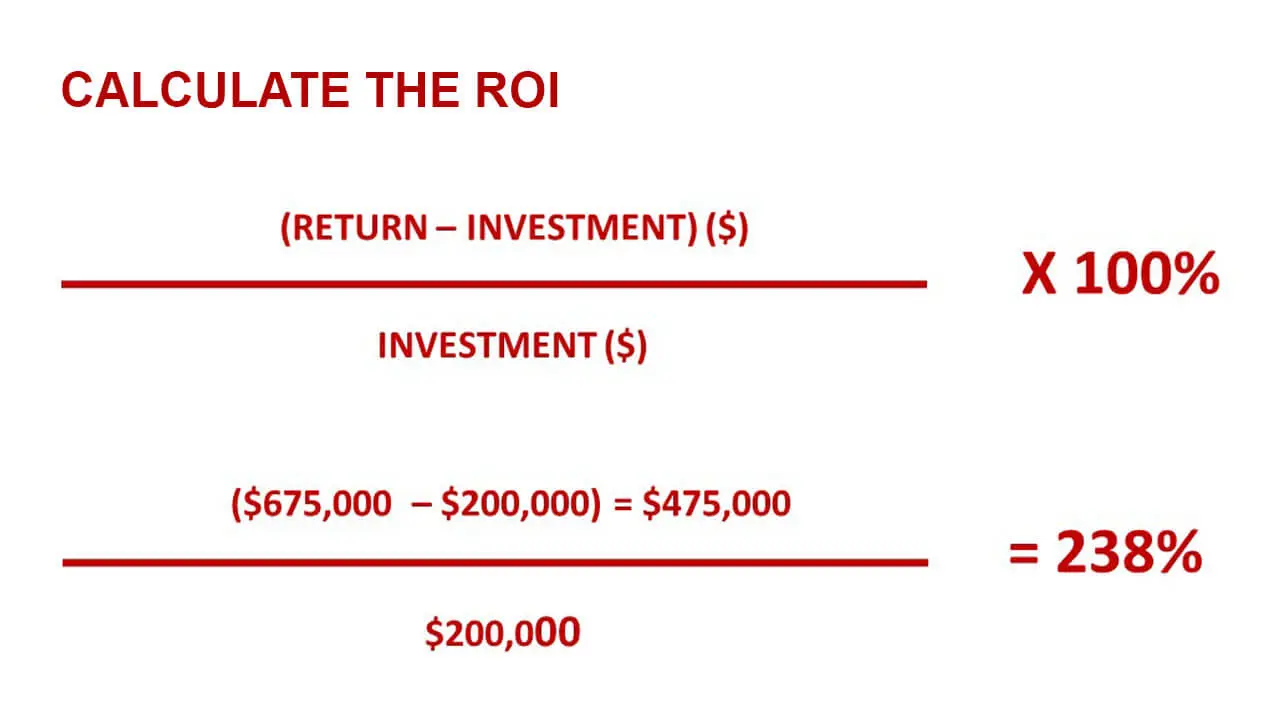
Defining ROI based on these calculations, it’s pivotal to note that the cost of physical products you sell in the export market equals the manufacturing costs of all the items plus the advertising costs. While the revenue is the amount you make from selling these products, the amount spent for each sale is known as the cost per conversion (CPC).
When a business generates leads, the overall costs equate to your advertising costs, and the revenue corresponds to the amount made per paying customer. For example, if you make a sale for every ten leads, which is $20, each lead will generate a $2 revenue.
Also, note that the amount you spend to generate a lead is known as the cost per acquisition — another metric used to determine the success of a marketing campaign.
Does Calculating ROI Help?
As highlighted earlier, understanding the return on investment of your business’s Google Ads campaign will give you insights into the monetary gains the campaign has generated, ultimately guiding you towards a higher ROI. Accordingly, you can make informed decisions on allocating your marketing budget.
Calculating ROI helps in determining whether additional funds should be channelled into successful ad campaigns. Similarly, you can pay less for channels that do not provide the desired results. You’ll also be able to alter your marketing strategy and make marketing efforts accordingly to improve the less successful campaigns.
How To Get The Measure Of ROI?
When measuring your Google Ads campaign’s ROI, it’s key to track valuable customer actions. These actions, or conversions, include things like web page visits, video views, leads, sign-ups, and purchases. Each conversion weighs into your campaign’s success.
Using tools like the Google Ads Conversion tool makes tracking conversions straightforward. It’s an effective way to monitor click-throughs that result in conversions, helping you figure out if a keyword or ad is pulling its weight. Plus, you can easily track conversion rates and costs per conversion.
Upon measuring the conversions, start assessing the ROI, taking into account the conversion values. Remember that each conversion’s value should be higher than the amount you spend.
For instance, if you allocated $10 on clicks for a sale and achieved $15 from that sale, you’re securing a $5 profit, indicating a positive return on your investment.
Cost Per Lead (CPL)
As a marketer, your goal is to cost-efficiently attract new leads and customers. For example, if you’re spending $50 to get a lead worth only $25 — you’re not getting a positive Google Ads ROI on the ad spend.
That brings us to the cost per lead or CPL concept — one of the most crucial digital marketing metrics. It’s the amount of money you invest in generating new leads. The CPL model is also used to determine the effectiveness of your content marketing strategy and Google Ads campaign.
Understanding your cost per lead helps you tweak and improve marketing strategies. You can easily spot which methods or channels are overpriced yet underperforming, enabling smarter decisions.
In short, calculating the CPL for your Google Ads campaign will help you find better ways and channels to market to the target audience.
Whether through inbound marketing initiatives, compiling a list of potential customer names, or even via email marketing, generating leads is crucial; ascertaining the CPL will facilitate tracking your marketing budget, contributing to a successful campaign.
Double-check your conversion metrics using the campaign bidding model “Target CPL” to ensure you’re reporting correctly.
How To Calculate Cost Per Lead In Google Ads?
To calculate the cost per lead (CPL) in Google Ads, you will need to follow these steps:
- Identify the total cost of your Google Ads campaign. This includes the amount you spent on the campaign over a specific period of time, such as a month or a quarter.
- Identify the number of leads generated by the campaign. A lead is defined as a person who has shown interest in your product or service by providing their contact information, such as their name and email address.
- Divide the total cost of the campaign by the number of leads generated. This will give you the cost per lead.
For example, if you spent $1,000 on a Google Ads campaign and generated 100 leads, your CPL would be $10 ($1,000 / 100 leads).
It’s important to track your CPL over time to see how it changes and understand what factors might contribute to any changes. This will help you optimise your Google Ads campaigns to maximise the number of leads you generate while minimising costs.
With that example out of the way, let’s look at it in more detail.
Cost per lead (CPL) is one of the most commonly used marketing metrics that can help gauge the effectiveness of any marketing campaign, be it on social media or any other marketing channel. And if you know the formula, calculating CPL is relatively simple.
Calculating this is straightforward. First, add up your marketing costs, then count the new leads generated. Finally, divide the total spending by the number of leads. Here’s the formula for clarity:
CPL = total marketing spend/new leads
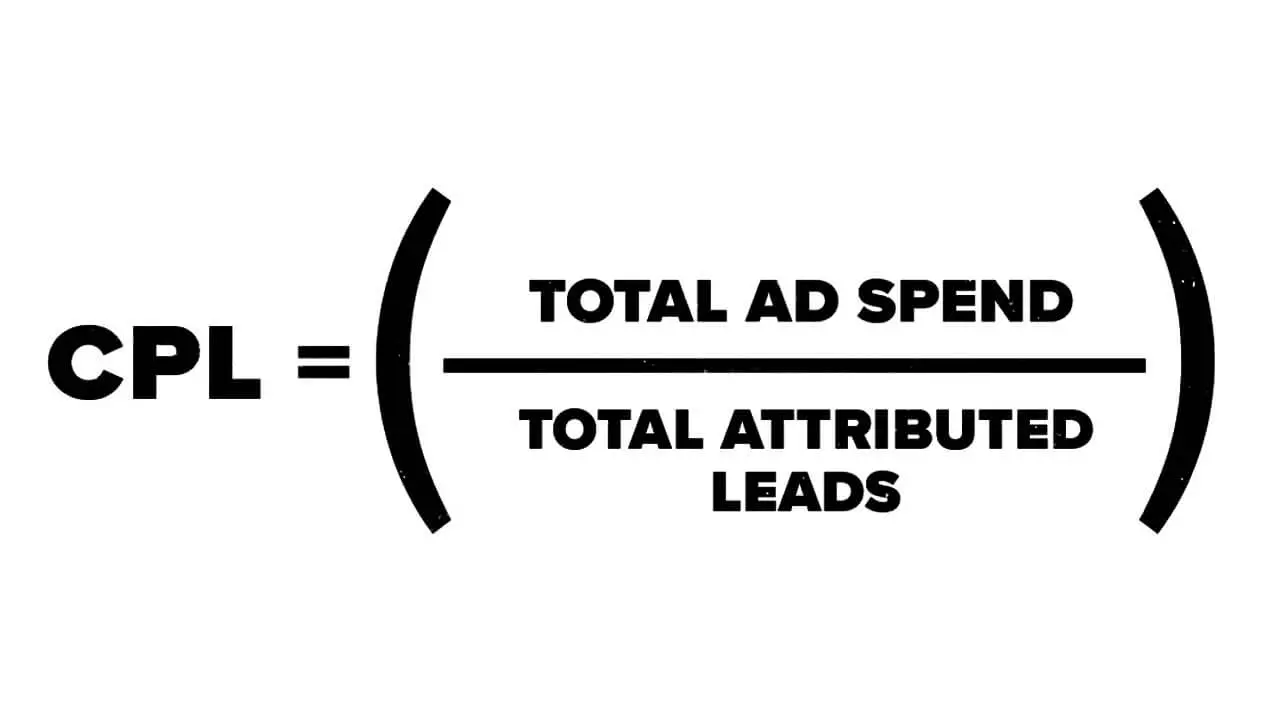
The total marketing spending will be the sum of your ad spend, time, and third-party expenses.
Once you know the average cost per lead, you may set realistic and attainable digital marketing goals. A clear CPL target will also determine how much you’re willing to spend to achieve your marketing goals, impacting marketing efforts.
You might use a different marketing strategy to double the overall revenue and maximise profits.
With that being said, let’s look at an example. Say $3,000 is your total marketing spend every month. And with the appropriate marketing efforts, you generate 60 new leads per month. So, you’ll be incurring a cost of $50 per lead.
This will help determine if the CPL is reasonable or if an adjustment is needed. The following sections provide more on this.
Cost Per Acquisition (CPA) Vs. Cost Per Lead (CPL)
You might confuse CPL with cost per acquisition (CPA) as a marketer. Both are similar, but the cost-per-acquisition metrics apply to the leads further down the marketing funnel. It’s the total cost of acquiring a new customer through a specific ad campaign or channel. It’s related to the total social media and ad spending on a Google Ads campaign.
How To Calculate CPA?
The formula for calculating CPA is similar to that for calculating CPL.
So, CPA = total money spent on acquiring new customers through a specific channel/ the number of customers acquired through that channel
To calculate the media spending of a campaign, replace “money” with “media.” This changes the formula to:
CPA = total media spend on a new channel/total number of customers acquired by the media
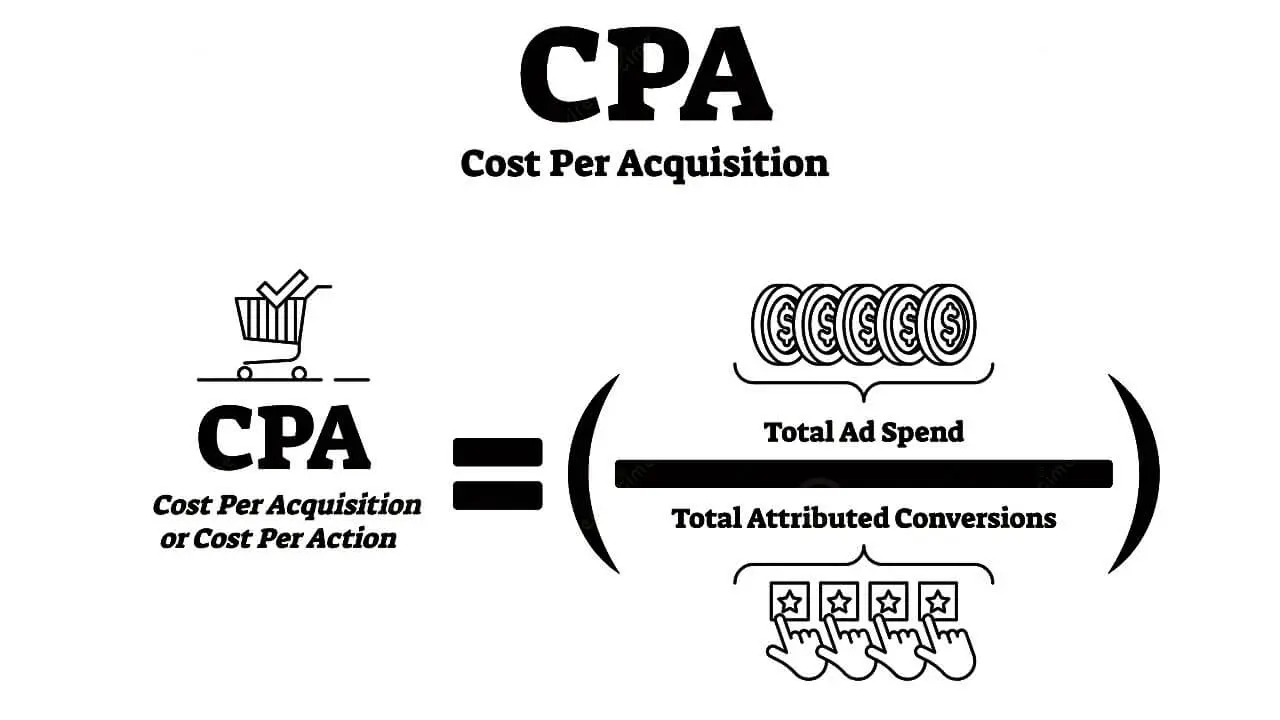
Now, consider, for example, that you spend a total of $750 on a paid ad campaign and generate five new customers from it. So, the cost per acquisition (CPA) will be $750/5, i.e., $150.
ROI Vs. CPL: What To Do With The Numbers?
CPL and ROI are the two most important metrics that help marketers make better decisions and strategies for their inbound marketing campaigns. So, start by comparing the ROI of your content marketing to the ROI of your other marketing channels.
If you notice that the content marketing plan outperforms the other marketing methods, you’re on the right track. If the plan is not performing as expected, determine the reason — it might be because of the topics, promotion strategies, or keywords.
For example, you may need to remove cost-per-click (CPC) ads and replace them with social media marketing, eliminating negative keywords. This will lower expenses yet boost website traffic, leading to higher conversion rates and ROI.
Moving on to CPL, your priority is ensuring the calculated cost per lead is within your budget. But for that, knowing how much you can afford to spend on a lead is essential. For this, you have to calculate the CLV or customer lifetime value.
This is a one-time deal in eCommerce channels; for example, a customer purchases and is gone. In this case, it’s easy to calculate the CLV, which is just the total price of a single purchase. On the contrary, the CLV will increase for subscription-based products based on the duration the customers continue their relationship with your company.
In such a scenario, you’ll have to determine the average profit per customer using the available numerical data. Consequently, calculate the cost of taking care of the customer for the duration they maintain a relationship with you. This will help you get the profit margin.
In short, knowing these two metrics — average profit per customer and the CLV will give you a clear idea of how much money you can spend on a new lead. The number will indicate the maximum amount you can afford, but that doesn’t mean you can’t spend more than the specified limit.
That said, always review your business goals to allocate resources appropriately and continue calculating the ROI to monitor the campaign’s progress. You can then make adjustments as and when needed.
How To Calculate CLV?
To calculate the customer lifetime value, you’ll need to divide the average monthly revenue by the customer churn rate. Then, multiply the answer by 100 to get the percentage of the result.
Here’s the formula to simplify your calculations:
CLV = (average monthly revenue/ customer churn rate) x 100
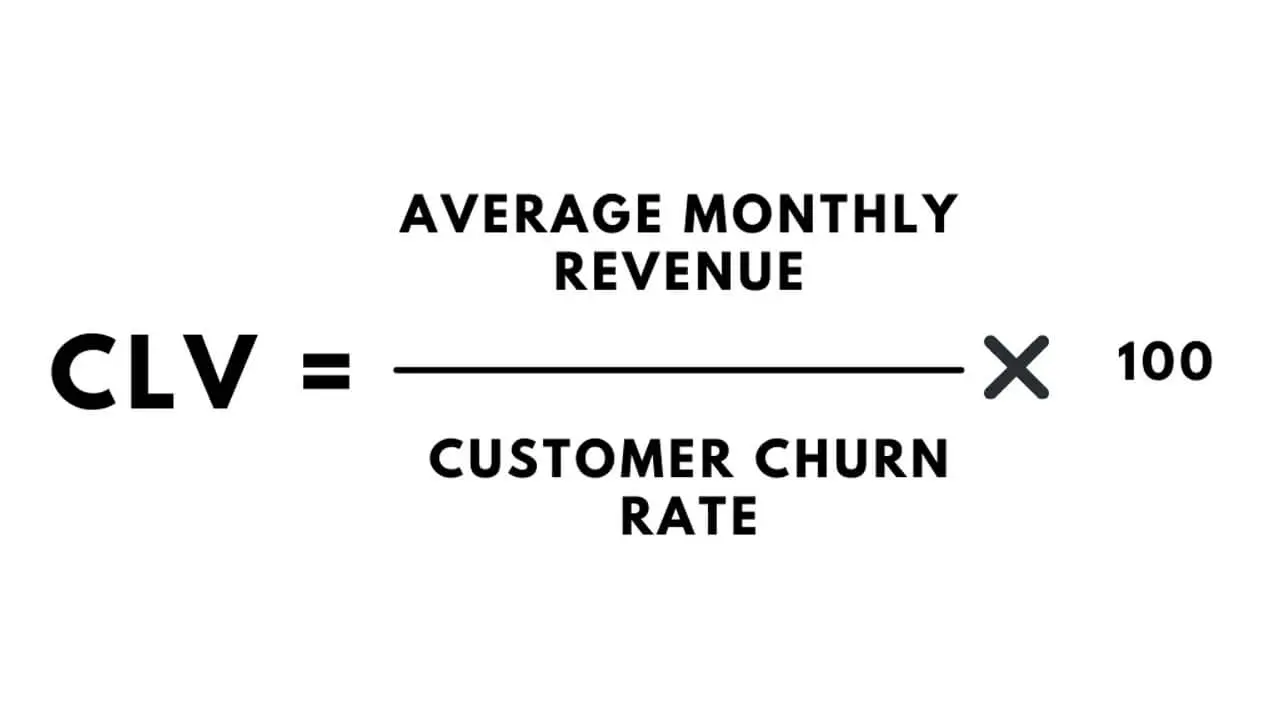
To find out the churn rate, you’ll need to add the number of customers in the month and subtract the number of customers who retained their subscriptions. Finally, divide the result by the total number of customers.
Consider this example: your monthly income is $60,000, and the number of customers in the month is 1,000. So, the average monthly revenue per customer is $60,000/1,000 = $60.
Next, suppose the retention rate is 950 customers; you can easily calculate the churn rate, i.e., (1,000-950/1,000) = 0.05
So, the CLV = $60/0.05 = $1,200
How To Calculate The Average Profit Per Customer?
Let’s now move on to calculating the average profit per customer. The formula is simple:
Average profit per customer = CLV — (average monthly expense per customer/ customer churn rate)
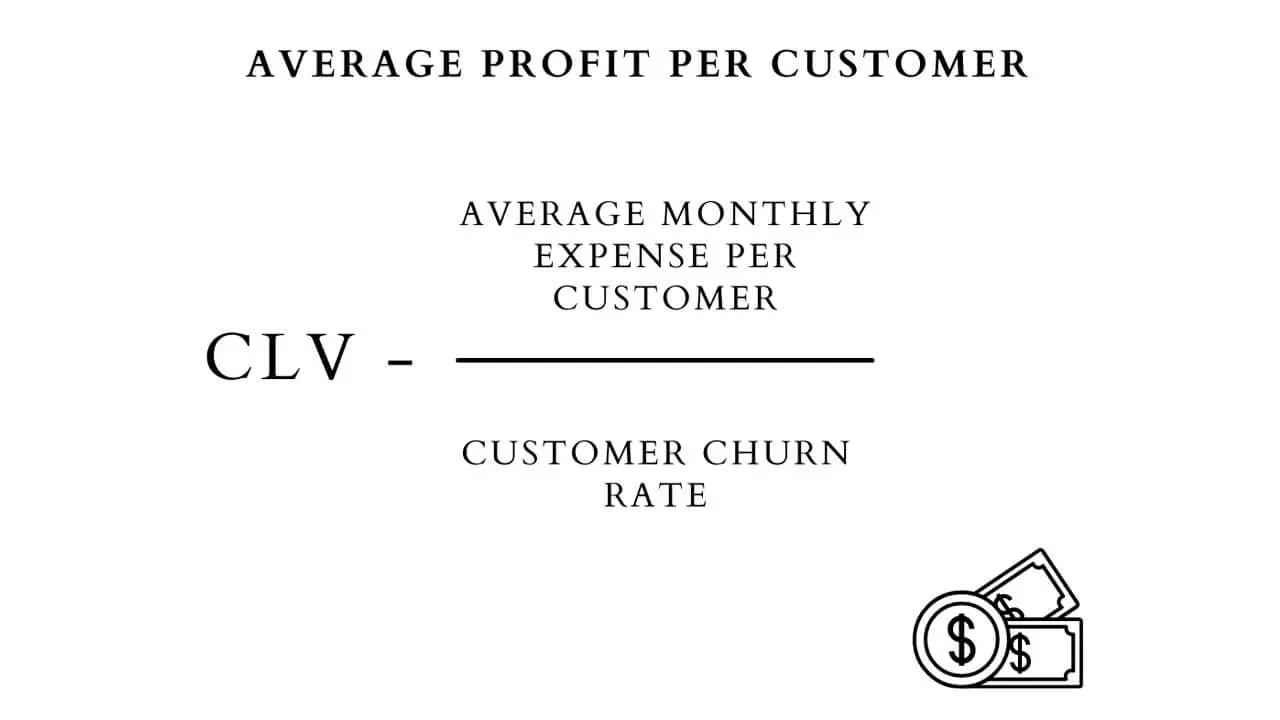
Suppose you spend $5 per month per customer and an additional $30 per customer for overhead expenses, such as rent and utilities. If the CLV is $1,200, and it costs around $35 to take care of them in addition to the overhead Google Ads costs, then the average profit per customer would be:
1,200 -($35/0.05) = $500
So, the average profit per customer here is $500.
How To Determine The Budget Per New Lead?
It’s important to note that not every lead can be converted into a customer. With content marketing, you might be able to generate leads and get them to visit your landing pages, but they might not be interested in buying the product or service the company has to offer. This is something that should be taken into account while determining how much money you can spend per lead cost.
There is a formula for this as well that will help you allocate resources accordingly, which is:
The following formula can be used to compute the maximum cost per lead (CPL) = average profit per customer x (closed monthly sales/ monthly leads)
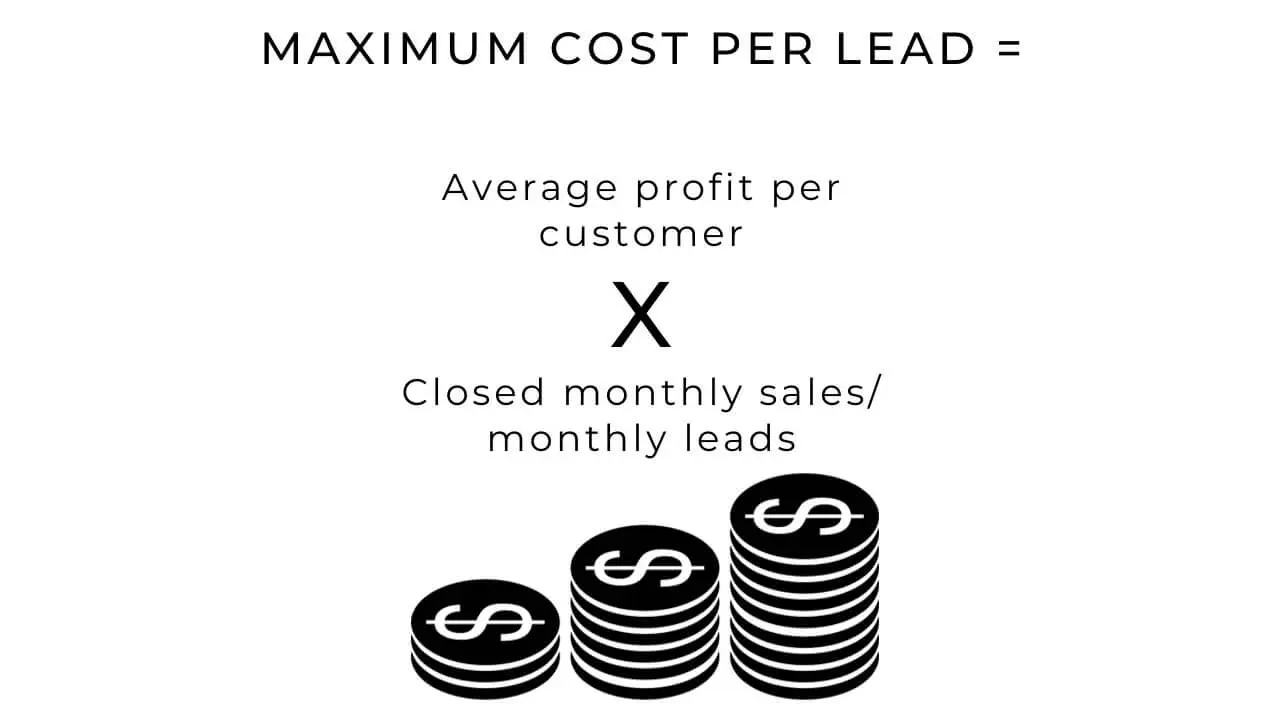
Now, suppose you generate 500 leads every month and convert 50 of them into customers. In that case, the maximum cost you can spend per lead is 500 x (50/500) = $50.
If you spend anything more, you’ll lose money. And for determining the actual CPL rates, you’ll need to focus on business goals. For instance, you may not mind higher CPL rates with thinner margins if the plan is to grow your customer base. However, the CPL should be as low as possible for more revenue or ROI.
Improving The ROI And CPL Numbers
When it comes to improving ROI and CPL numbers for lead generation and conversions, improving the content on the marketing channel should be your primary focus. Next, focus more on the target audience by identifying who they are, their problems, and what solution you can offer to help them.
Understanding your audience will make it easier to convert leads into customers. You need to know how to speak their language (and we don’t mean it literally). That’s when artificial intelligence (AI) becomes a valuable marketing tool to explore in the content marketing industry.
These free tools will help enhance your content in a way that resonates with potential customers. They analyse the text and then suggest the best keywords to help you connect with the readers. This tool also makes recommendations based on the distribution marketing channels being used.
It understands how language correlates with customer behaviour. By including these terms and phrases organically, you promote the action, which leads to conversions.
Combining the right tools with high-quality, useful, and relevant content like Google Analytics will help drive traffic and more conversions. And unlike pay-per-click ads, you’ll only have to pay for the content creation once. It will continue to ensure lead generation as long as your content is live.
How To Reduce The Cost Per Lead (CPL)?
CPL and ROI are interrelated in Google Ads. So, if you wish to boost the ROI of your marketing campaign, focus on reducing the cost per lead. Here are a few ways this can be done:
1. Focus On Inbound Marketing
Marketers prefer the conversion to occur close to the bottom of the marketing funnel so that they don’t have to spend much effort moving it up. However, inbound marketing offers a variety of content at different stages. This increases the chances of conversion, as the content prompt leads to making the purchase.
2. Improve the Quality And Relevance Of The Ads
Optimise your landing page to get as much value from it as possible. Leads should be able to understand what you offer within seconds. For this, relevant content is key.
It’s crucial to focus on selecting highly targeted long-tail keywords that mirror what potential customers input into a Google search. Also, remember that single-keyword ad groups target a specific keyword per ad group to help you gain high-performing ads more efficiently.
This marketing strategy will increase the quality score, ratings, and relevance and lower the cost per click. In short, the CPL will be low if you’re spending less on traffic that is interested in your content.
3. Target Audience Based On Their Behaviour
Google enables the targeting of individuals who display interest in your company’s offerings, thus generating high-quality leads. Additionally, you can retarget leads who may have already visited your website so that they convert.
For this, you’ll need to group audiences into different categories based on their behaviour, such as:
- Those who visit high-intent pages, be it a pricing or landing page at the bottom of the funnel
- Those who visit negative intent pages, such as an un-subscription page
- Those who visit the high-traffic pages, such as blog pages and the website homepage
Your marketing plan should lure high-intent visitors, as they are more likely to convert. This is a proven strategy in the field. That said, paying attention to the audience already converted by serving them paid ads is also essential.
These strategies ensure you aren’t spending on audiences unlikely to convert. It’s all about focusing your resources where they’ll have the most impact.
4. Don’t Waste Money And Effort On Low-Performing Keywords
Ensure you thoroughly examine the performance of the multiple keywords you’re already investing in. Optimise the terms and phrases that have helped conversions and remove the underperforming ones.
There’s no point in paying for a highly searched keyword if it doesn’t help convert leads frequently. It’s better to switch to targeted long-tail keywords instead. Although you might get a few clicks, those who do click will convert at a higher rate.
5. Optimise Ad Performance By Performing A/B Tests
It’s always recommended to have at least two ads running simultaneously to perform A/B testing. If you only run one paid ad campaign, you won’t be able to compare, analyse, and optimise based on the results.
Remember that the clear winner among ads is the one that achieves a greater conversion volume while reducing the CPL. There’s no point in running an ad that gets clicks but doesn’t prompt conversion action.
Correctly configuring tools like Google Analytics can help determine your campaign’s performance from a more granular level. For the best results on your PPC ads, it’s strongly advised to link both Google Ads and Google Analytics for seamless data integration.
Formulas For Calculating Google Ads
Measuring ROI and CPL will help you optimise your Google Ads or social media marketing campaigns and allocate resources accordingly. It may seem challenging initially, but you’ll get the hang of it after going through the formulas and examples we’ve put together for you.
Regularly review your calculated data, viewing it in a cohesive, synergistic manner. This holistic approach aids in predicting potential revenue from sales and highlights optimal investment areas.
That’s all we had today. We’ll leave you with a pro tip: always calculate the customer lifetime value (CLV) to determine the budget needed for ad spending. This will help your company grow with minimal risk.
Please leave your thoughts on the topic in the comment section below.

